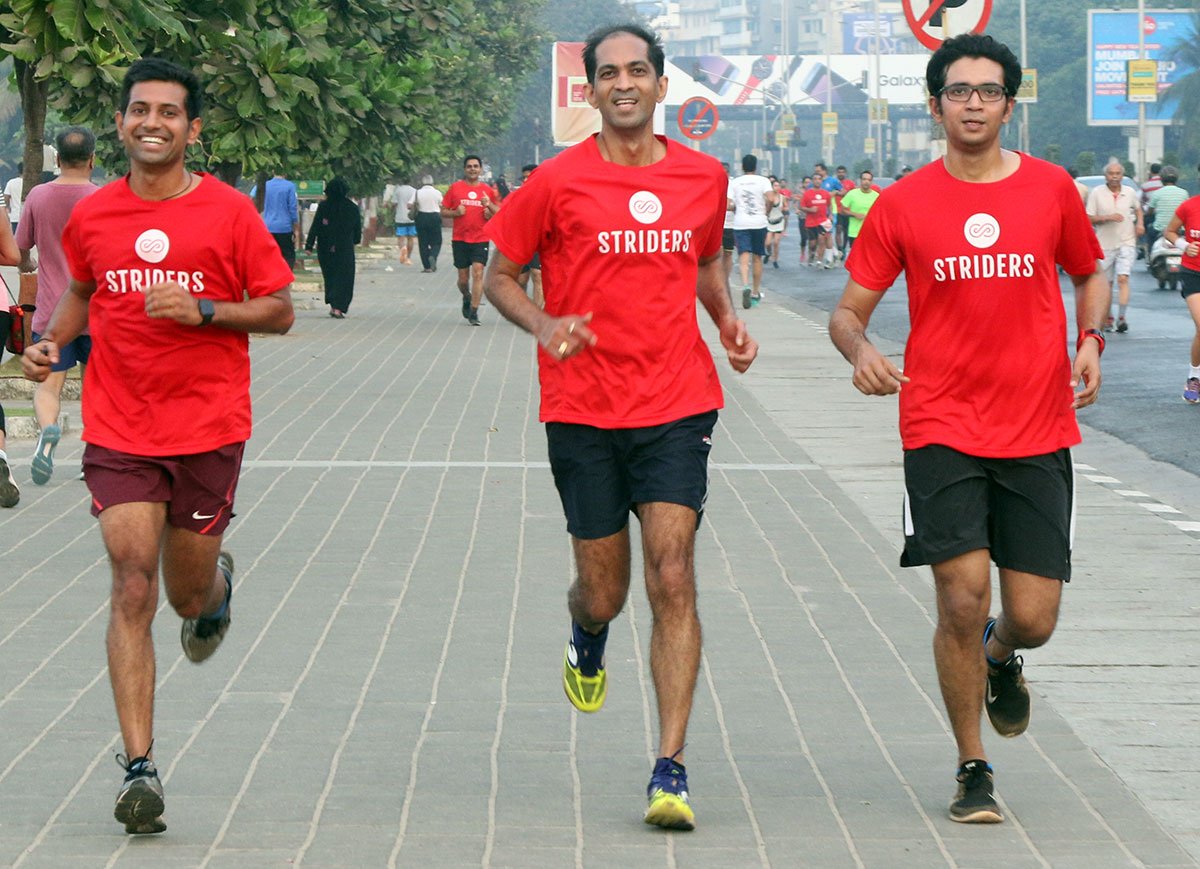Barefoot running stated simply is running without shoes. Popularised by the book ‘Born to Run’ by Christopher McDougall, barefoot running has its share of die-hard protagonists and has been a topic of debate in the running community for a long time. Minimalistic running is differentiated from barefoot by the use of running shoes that aim for an experience close to barefoot running. Minimalistic shoes are extremely light and flexible. They have less support and cushioning in comparison with conventional running shoes. Additionally they tend to have a lower drop which is the height differential between the sole under the heel and the sole under the forefoot.
The Theory behind Barefoot:
The plantar foot is considered one of the most proprioceptive* areas of the human body with small and large nerves. The small nerves in the bottom of the foot are responsible for processing information such as texture, skin stretch, vibration, deep pressure and light touch – all the stimuli which allows us to maintain upright stance, manipulate uneven terrain and absorb impact forces. Shoes , socks and orthotics block these highly sensitive small nerves on the bottom of the foot. The blocking of the plantar receptors skews our perception of how hard we are striking the ground, so the tendency is to strike the ground harder. This results in an increase in impact forces as the body is unable to accurately perceive and respond to these impact forces.
Cushioning and extra support in shoes also decreases the strength of the feet. The feet become de-conditioned due to dependency on shoes and orthotics rather than our own natural neuro-muscular response system.
In her book ‘Barefoot Strong’, Dr. Emily Splichal explains the importance of barefoot activation and strengthening as the key to movement longevity and efficiency and also in avoiding unnecessary injury.
Let’s look at the pro’s and con’s of barefoot running
Benefits:
- A recent Harvard based study has shown that barefoot running has the ability to alter the way the foot strikes the ground and generally produces a forefoot or midfoot strike pattern which generates a lower collision force on impact as compared with a heel strike in shoes. About 75 per cent of shod runners tend to heel strike while the initial contact for most barefoot runners is forefoot or midfoot. Barefoot runners believe this to be a more natural way to run, making the feet stronger and reducing the incidence of injuries.
- Barefoot proponents feel that it enables better proprioception*, balance and coordination as the runner feels more in touch with the ground and the environment.
- Barefoot / minimalistic running can teach you to run more gently, developing a less impactful stride.
- Running barefoot with proper form and technique can strengthen the muscles, tendons and ligaments of the feet.
*proprioception : The term proprioception is used to describe the sensory information that contributes to the sense of position of self and movement. In barefoot running this sensory information is obtained through the small nerve receptors in the feet when in direct contact with the ground. It triggers the body’s instinctive reaction to stimuli enabling barefoot runners to tread lightly and develop natural movement patterns.
Disadvantages:
- Shoes offer a significant amount of protection from surface debris such as glass, nails, rocks and thorns. They also offer insulation in cold weather.
- Heel striking may be the preferred way of many runners and coaches and in this case cushion for the heel while running may be vital.
- The surface for running may be an important consideration when running barefoot or with a minimal shoe. Asphalt and concrete are hard surfaces while grass and dirt trails are softer, more forgiving surfaces.
- Lower extremity injuries may result due to the sudden increase of stress to improperly conditioned muscles and tendons. Transition to barefoot or minimalistic running warrants a careful approach with proper guidance.
If a runner asks me whether they should start running barefoot, I have them answer a few questions first.
- How long have they been running?
- What kind of shoes? Neutral or stability or minimal?
- Number of injuries from the beginning
- What kind of foot? Neutral or high arched or flat?
Based on the answers I help them determine whether it is safe for them to begin running barefoot. For example if a runner has been running for years without any major injury and has a neutral foot it would be fine to attempt barefoot running. For a new runner with already a few injuries under their belt and possibly an over-pronated or flat foot, I would advise them to work on foot/ankle strength and attempt minimal shoes before they begin barefoot running. Other factors to consider are how heavy you are, what terrain you are running on- beach, treadmill or road; and whether you cross-train along with the running. All these factors can impact the rate of injuries if you decide to go barefoot.
If you are indeed keen to become a barefoot runner it is best to get a running gait analysis performed by a sports physiotherapist- preferably one who specializes in running- who will help you understand your strengths and weaknesses and also help you determine whether you are ready to throw your running shoes away!

